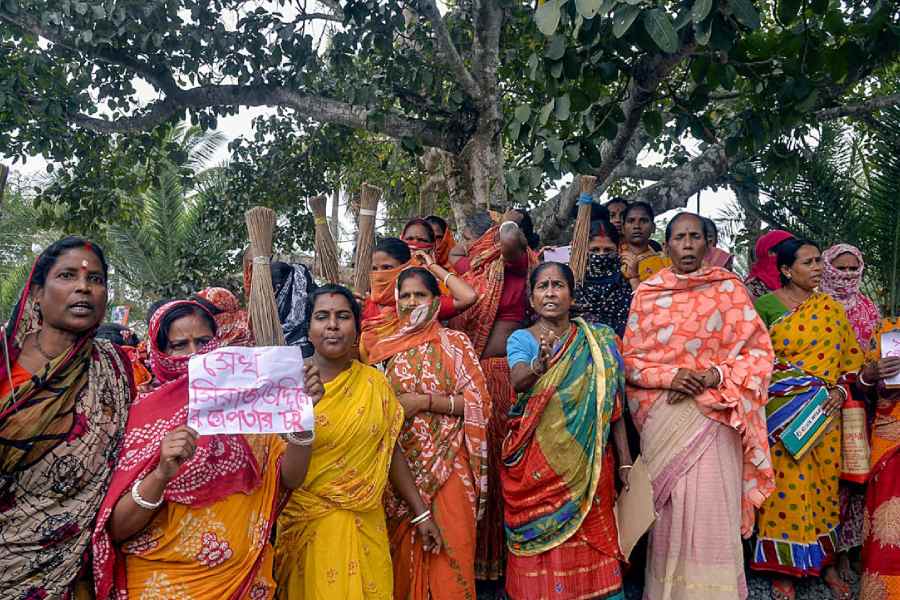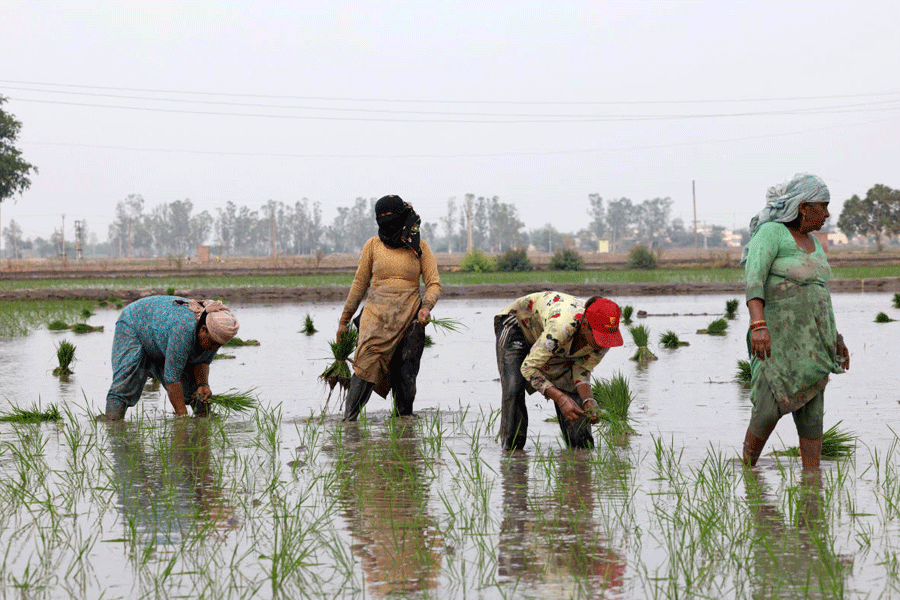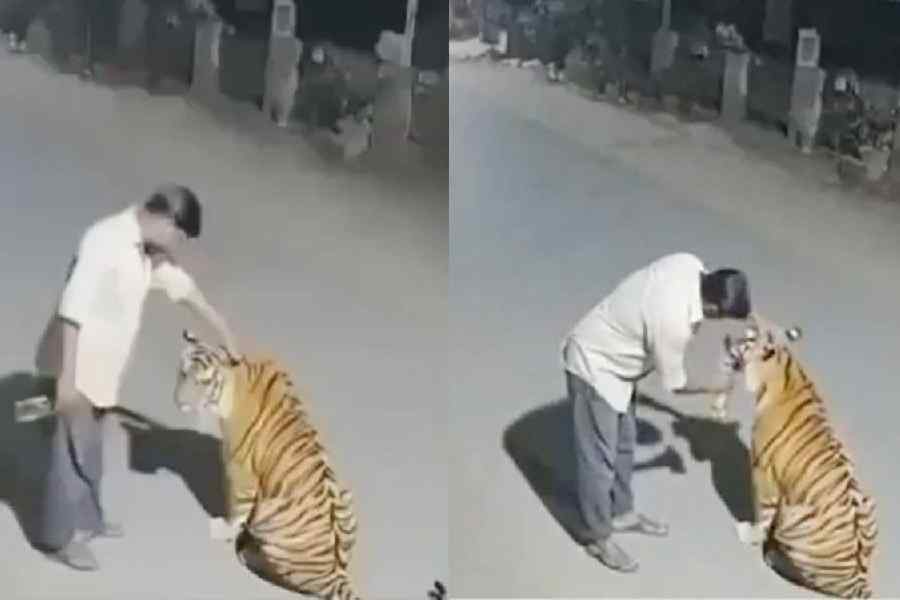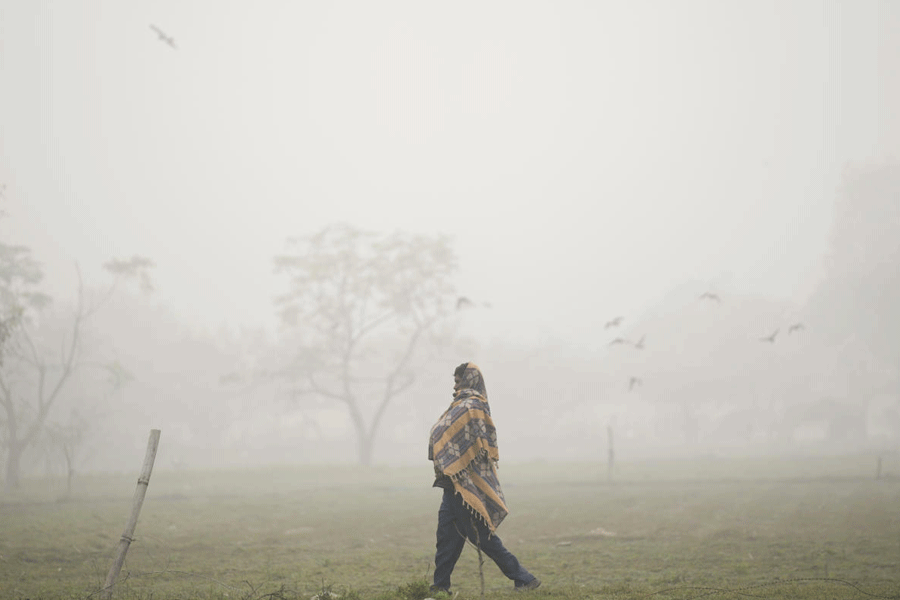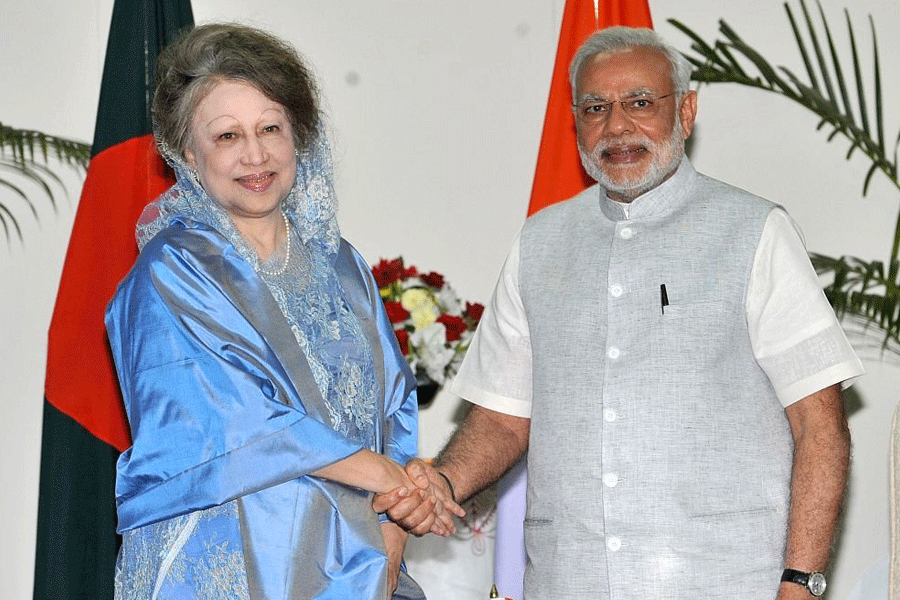The past fortnight has witnessed the All India Trinamul Congress government in West Bengal being hauled over the coals for its insensitive handling of the events in Sandeshkhali.
For a start, a state government that has built a formidable reputation for itself on the strength of its success in beating back a challenge by the Bharatiya Janata Party in 2021 has been seriously embarrassed by the depredations of the local dons in Sandeshkhali. Despite the attempts by the clutch of her Khan Market gang supporters to salvage Mamata Banerjee’s image, the jagged edges of the AITC at the grassroots have been bared. The chief minister’s image as a doughty fighter for the empowerment of women has taken a very serious battering.
The local media, which had acquired a reputation of being prominent members of the chief minister’s fan club, were suddenly confronted by incontrovertible evidence of AITC leaders subjecting villagers to a reign of terror and had to change tack. The local police — particularly the handful of officers belonging to the elite Indian Police Service — that had colluded with the likes of the notorious Sheikh Shahjahan and his cronies has attempted to present a picture of even-handedness and adherence to the rule of law. Unfortunately for it, the accumulated anger of the local women has been a big deterrence to the pacification drive. On its part, the judiciary has also stepped in and stopped the state government from denying Opposition politicians and civil liberties groups access to Sandeshkhali. Last Wednesday, after being presented fabricated charges to justify the incarceration of a local leader of the Communist Party of India (Marxist), a Calcutta High Court judge threatened to have the errant police officers arrested.
The political response of the AITC to the national furore over Sandeshkhali, particularly the sexual exploitation of women by its local leaders, has been confusing and erratic. Initially, there was an attempt to suggest that Shahjahan was a misunderstood social worker who was being wrongly targeted by the Enforcement Directorate and the BJP. Loyalists of the chief minister insisted that there was no stain on the character of the AITC leaders and even asked those levelling allegations of molestation and rape to produce videographic evidence. It was even suggested that professional actors from Calcutta had been brought to Sandeshkhali with the sole aim of levelling wild charges against the AITC. There were demands that the women making allegations against Shahjahan and his henchmen show their faces to prove they were locals and not outsiders.
With the Lok Sabha elections around the corner, it is natural that Mamata Banerjee would want to shift the focus away from Sandeshkhali and, in particular, from the exploitation of women by local AITC leaders, that too inside the party office. At one level, the local police and the civil administration have been instructed to arrest the tyrants on the strength of first information reports and, where possible, return the lands that had been forcibly captured from local farmers and turned into prawn farms.
At the same time, the ruling party’s approach has got to be nuanced. The tyranny that Shahjahan had unleashed in Sandeshkhali has been replicated in other parts of North and South 24 Parganas by bahubalis owing allegiance to the AITC. The danger of fully dismantling the network of crime and terror established in Sandeshkhali is that this will sound alarm bells to the criminal dons elsewhere and test their loyalty to the AITC. In the aftermath of the AITC suffering losses in the 2019 parliamentary election, a handful of dons had shifted allegiance to the BJP, although without securing any tangible benefit. Any evidence of the weakening of the existing system of social control could, conceivably, lead to some of the dons reviewing their options prior to the general election in April-May. It is doubtful whether Mamata Banerjee or her nephew would want to take such chances.
To beat back the adverse effects of Sandeshkhali, the chief minister appears to be relying on her tried and tested methods of counter-mobilisation. First, she announced a slew of extra welfare benefits, including doubling the payments to women under the Lakshmir Bhandar scheme. Some of the outstanding payments under the MGNREGA that had been stopped by the Centre for violating accounting norms are being sought to be unilaterally cleared. Secondly, the regionalist invocation of Bengali pride has always accompanied the chief minister’s welfare architecture. As the general elections approach, Bengali pride will also be accompanied by a cultural derision of Gujaratis and Hindi-speakers. The aim will be to cast the BJP in the role of outsiders with limited or no understanding of the cultural idiom of Bengal. This attack on the culture of outsiders had worked well in past elections, and the AITC is hopeful that a similar approach will prevent any loss of women votes after the Sandeshkhali revelations.
Sandeshkhali has had an unsettling effect on the AITC ecosystem. The 2021 assembly election showed that Mamata Banerjee owed her overwhelming victory primarily to two factors. First, at the core of the AITC support base was the solid support it secured from the 32% or so Muslim electorate. Mamata Banerjee hopes that in the event of the Citizenship (Amendment) Act becoming operational before the announcement of elections, Muslim voters will repeat the consolidation of 2021. Second, although the BJP won around 52% of the Hindu votes in Bengal, the AITC won a significant amount of Hindu votes to overwhelm a party that receives no support from minority voters. Hindu women have given Mamata Banerjee disproportionate support.
The danger from Sandeshkhali for the AITC lies in the erosion of its support from Hindu voters. Although Bengal doesn’t count itself as part of the so-called Ram belt, the emotional upsurge associated with the Ram temple in Ayodhya has enlarged the pan-India Hindu vote, including in Bengal. Add to this the continuing enlargement of personal support for Prime Minister Narendra Modi and it is possible to understand why the AITC is fearful of Sandeshkhali making a dent in its Hindu women support base.
Outwardly, the political situation in Bengal seems eerily reminiscent of the situation that prevailed in 1977 when general elections were announced. The streets were totally dominated by the Congress and the Opposition supporters kept their heads down in fear of retribution. Even on polling day, few realised the numerical preponderance of the silent protests through the ballot box.

